

Max Davies
2026 Toyota HiAce review
2 Hours Ago
"A $315,000 SUV from China? Tell 'em they're dreaming!" – that's exactly what we thought until we drove the Lotus Eletre...
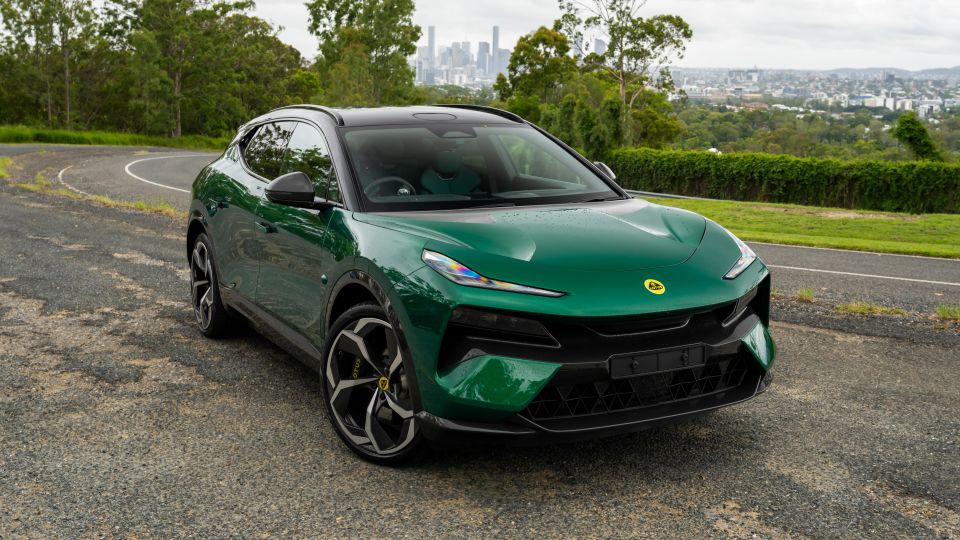
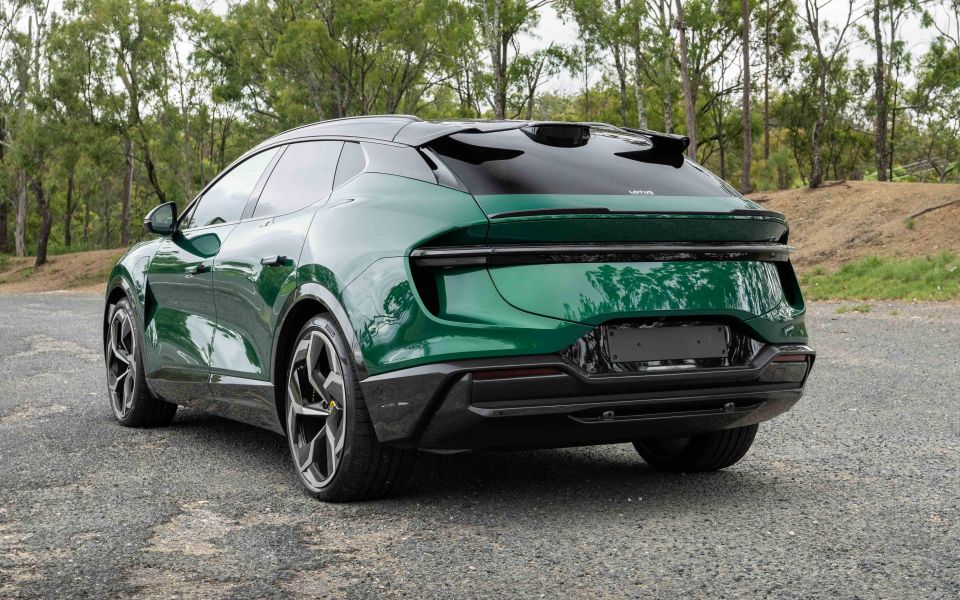

Quickly see how this car stacks up against its competition. Select any benchmark to see more details.
Where expert car reviews meet expert car buying – CarExpert gives you trusted advice, personalised service and real savings on your next new car.
It’s the beginning of 2024, and if you happen to be the sort of that gets sucked into endless reels and memes on socials, you would have noticed a great deal of 2024 expectation-disappointment memes. The sort that talks about how we expected flying cars and living on Mars by now but instead, we have biological males competing in women’s sports.
In that very same context of future expectations, the Lotus Eletre may be an odd exception because it is actually how many may have imagined 2024 to be; full of forward thinking technology that actually works.

The Eletre is a spaceship on wheels in many respects, and the fact that it is a Chinese-made SUV (from Wuhan no less) wearing a British badge that once emphasised simplicity and lightness should not take anything away from its engineering prowess.
For those that don’t know, Lotus’ vehicle manufacturing process today is split into two brands, Lotus Cars which makes the Emira currently, and in the past produced the likes of the Exige, Elise and Evora in Hethel, Norfolk (UK); and then there is Lotus Tech, which is the Wuhan-based electric carmaker in charge of the Eletre and future EV models. There is also Lotus Engineering, but it doesn’t produce cars.
Since 2017, Lotus as a whole has been majority owned by China’s Geely, which also owns Volvo and Polestar plus lesser known brands like Lynk & Co and Smart (joint venture with Mercedes-Benz).In that time the famously British brand has been undergoing a serious transformation involving billions of investment to become a leading manufacturer of sports cars and electric vehicles to compete with the likes of Porsche, Lamborghini, Ferrari and Aston Martin.
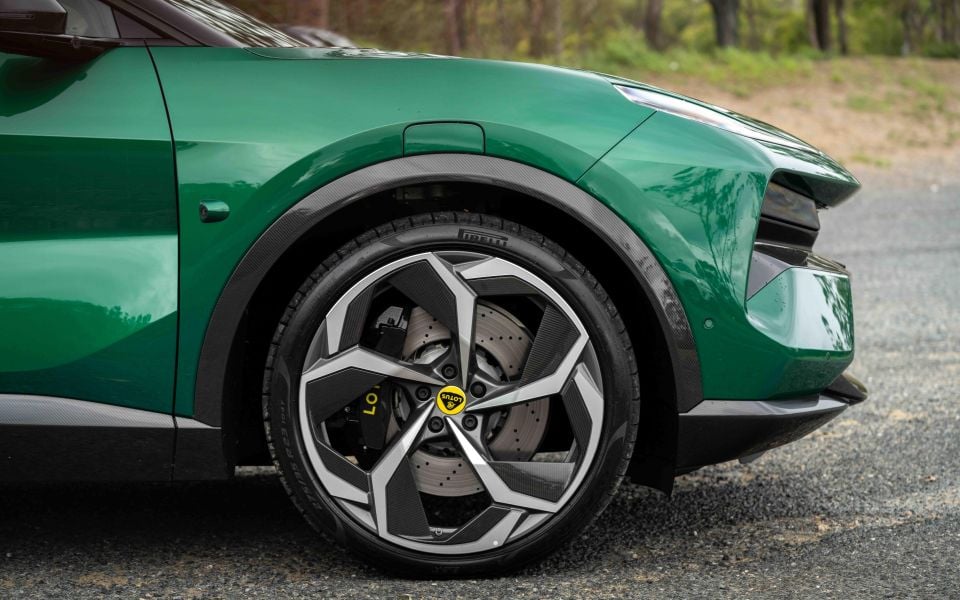
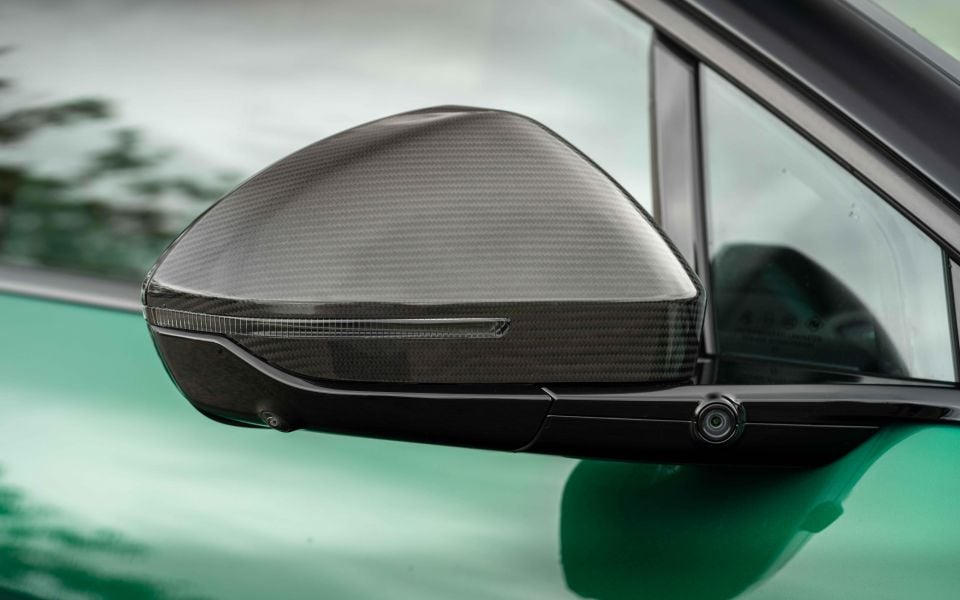
While the Lotus Emira continues the tradition of two-door light(ish) weight sports cars, the Eletre follows the absolutely undeniable successful formula of super sports car manufacturers producing SUVs to satisfy not only consumer demand but also helping create a viable business.
So while the rusted-on purists will say company founder and automotive icon, Colin Chapman, would be rolling in his grave if he knew a four-door high-riding SUV weighing nearly 2.7 tonnes is bearing the Lotus name, by that same token Enzo Ferrari would have a heart attack knowing the Purosangue SUV (ironically, meaning ‘pure blood’ in Italian), is diluting the… pure blood of the Ferrari stable.
Not to mention the Lamborghini Urus, the best-selling Lamborghini of all time, has single-handedly helped save the company from the brink, much in the same way the Porsche Cayenne rescued the ‘911 company’ from near bankruptcy.
So if you are here to satisfy your morbid curiosity about how bad the Lotus Eletre is and how it doesn’t deserve to wear the Lotus badge, you will be bitterly disappointed because the real question here is whether the Lotus badge deserves to be on the Eletre.
To give you some context about this particular top-spec Lotus Eletre R, which we picked up from the home of Lotus in Brisbane’s Fortitude Valley, we were genuinely expecting it to be a little bit awful.
There were a lot of jokes between a few of us here as to whether we should start writing our ‘most disappointing cars of 2024’ list already and how the Eletre literally makes no sense whatsoever and… the most repeated phrase: “who in their right mind would pay more than $300,000 for a Chinese-made electric SUV wearing a Lotus badge?”

The answer to that question should be ‘a lot of people’ if they actually come and experience it because the Eletre is really, ridiculously good – though not quite excellent.
This is not a statement to throw around lightly, but the Eletre is as much an insanely fast SUV as it is one of the most advanced cars we have ever tested; not in just sheer speed – it’s arguably the second fastest SUV in the world after the Tesla Model X Plaid – but also how it implements its technology and deals with its surroundings, showing yet again why the Chinese approach of buying and adapting existing technology instead of trying to create it all from scratch is the way to go – hello, Japan? Are you listening?
Australian-spec Eletres will arrive locally by May or June 2024, but for now we were given a non-AU-spec Eletre R model in a gorgeous combination of Galloway Green and Malachite interior, with some features missing and some system running in demo mode.
Even so, it changed our mind almost entirely about what Lotus will and could be, in the future.
In Australia Lotus will sell the Eletre in three variants – here we’re testing the flagship Eletre R.
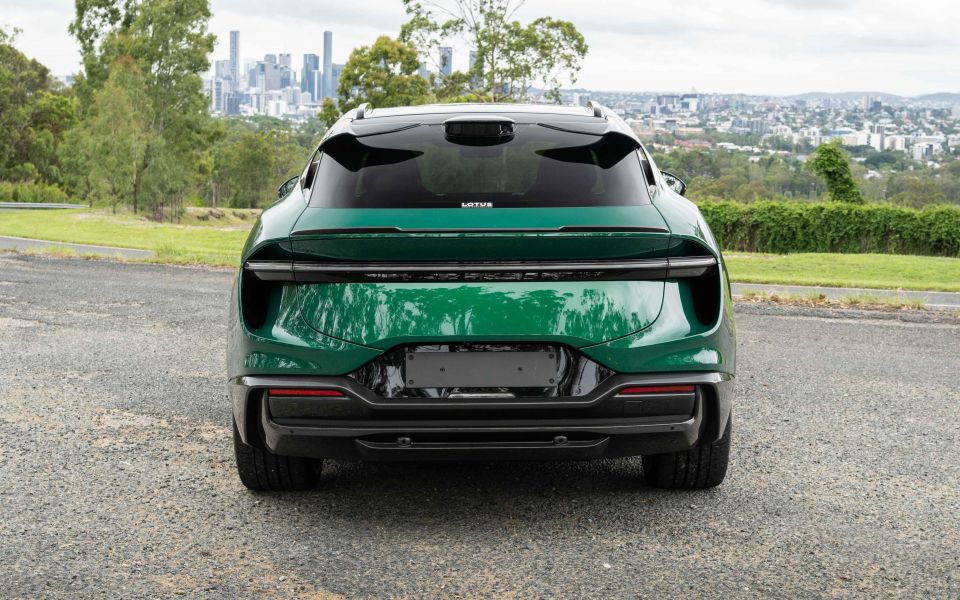
Lotus Eletre pricing:
Prices exclude on-road costs
Buy your new car without the stress. It's fast, simple and completely free.

Great service from Travis and team, second time I have used this business would not hesitate to recommend them to anyone
Craig C.
Purchased a Ford Ranger in Sunshine Coast, QLD
CarExpert helped Craig save thousands on his Ford Ranger, now let us save you on your next new car.
Find a dealThere is a certain level of expectation for buyers at this price point, and to be fair – ignoring some of the ridiculous limited-edition concepts – Lotus has never had to meet these requirements before with a sports car, let alone an SUV that needs to appeal to the female driver of the house as much as the male.
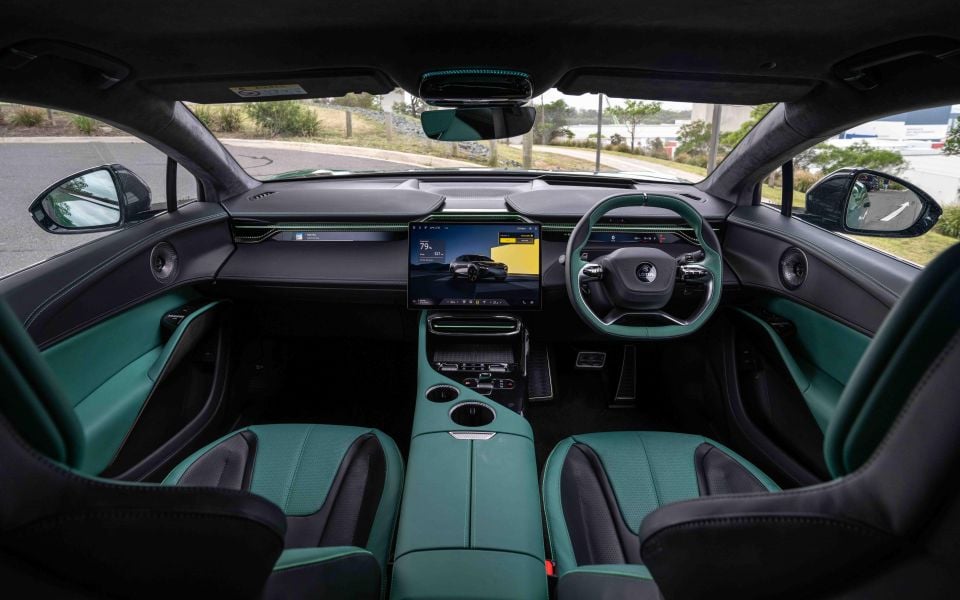
There are certainly some inspirations and lessons taken here from the likes of Tesla, such as its massive 15.1-inch central screen that controls most things in the Eletre, but there is also a great deal of finesse and sophistication to the interior’s fit and finish that is uniquely Lotus.
Whether it’s the super high-quality interior lighting system, the Ferrari-inspired passenger display (standard across the range), the quality of the three displays in general, or the 2160W 23-speaker KEF sound system, the Eletre feels its price.
It may be built in China, but having been in pretty much all of its Italian, German and British competitors, if you didn’t know where it came from or what badge it wore on the outside, you would not be scrutinising the surfaces and materials as hard.
Most importantly, even once you do, you would not be suspicious of why it stands up to the test and then ask yourself : ‘what’s the catch?’

There is no reason to lie about it, there is an inherent bias against luxury items that come from China. We have an intrinsic belief that Chinese made goods must be built to a price and use material that is not of the same quality of the Europeans or Americans.
It’s a complete misconception, of course, and as just one basic example one has to pick up the world’s most used high-quality, high-margin product: the iPhone. The titanium iPhone 15 Pro is a product of western engineering and Chinese production (much like the Eletre), and the quality and craftsmanship that goes into it is second to none.
The Eletre will undoubtedly suffer from the ‘made in China’ stigma, but it’s 2024 and if we are to sit here and judge a car on its merit, and merit alone, it’s one hell of an interior.
The seats, both front and rear, are very comfortable while also being supportive. There is heaps of room inside the Eletre and you can easily fit five adults for those long trips, with a pretty substantial boot as well.

The steering wheel is epic to hold and use, while the paddles attached control the driving modes (right) and regenerative braking (left). We found the size and feel of the steering wheel to be ideal and definitely giving the right ambience to the Eletre.
We did find the different-sized cup holders a little annoying and to be fair, the wireless phone charging mat is completely flat with almost nothing to hold your phone in place and for a car that can go from 0-100km/h in under 3.0 seconds.
Our iPhone flew into the back seat at least 10 times during the few days we had the Eletre on test. It’s basically useless to charge your phone if you intend to ever accelerate.
It would make a lot of sense to design that with a holder or on an angle facing down.
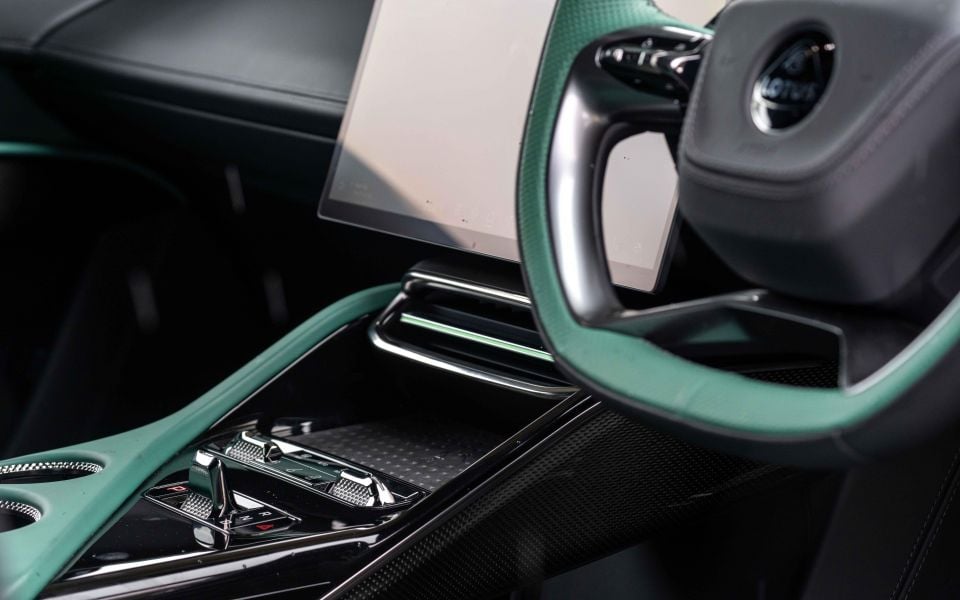
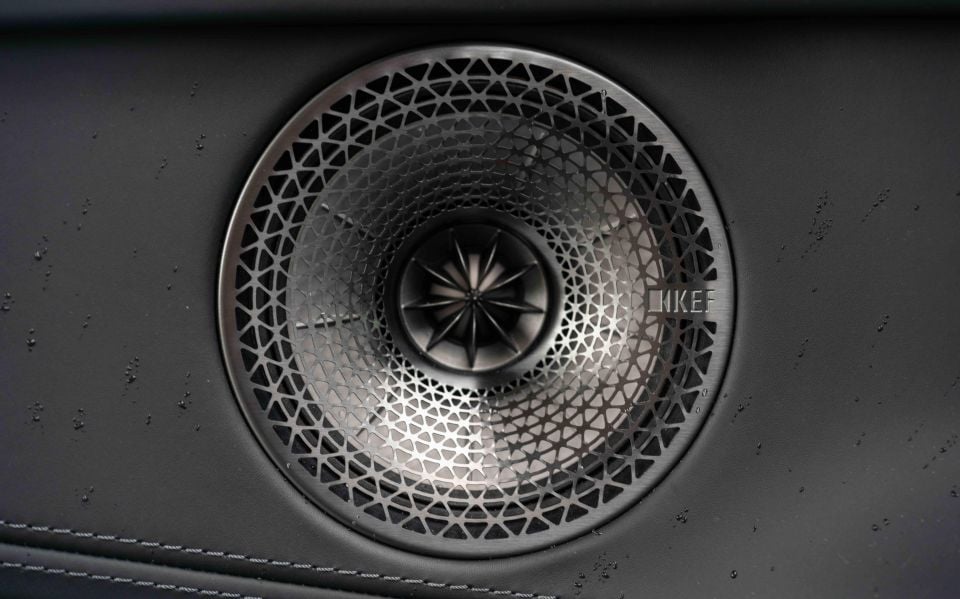
No doubt if you compare it to a Bentley Bentayga it doesn’t stand up to the level of detail and quality, but put it side by side with an Urus or even a a Purosangue and it certainly holds its own and if you love technology, it actually embarrasses the both of them.
The biggest drawcard of the Lotus Eletre against its European rivals is that it brings technology that is more advanced than Tesla, with European handling and styling.
The folks at Lotus decided to not stuff around building their own operating system from scratch, instead, the Eletre uses one of the best graphics engines money can buy, the Unreal Engine.
And not just any version, but Unreal Engine 5, the absolute latest.
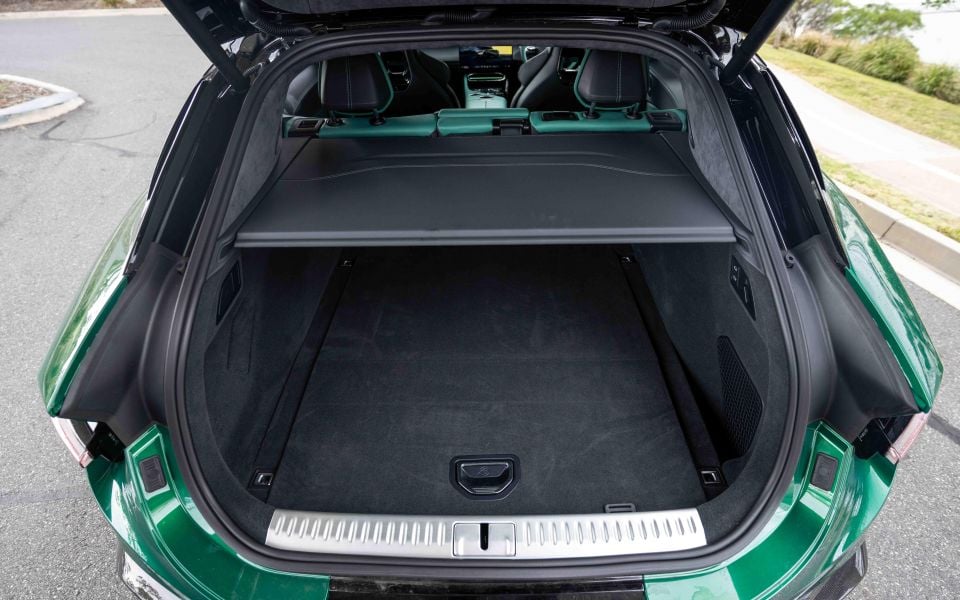
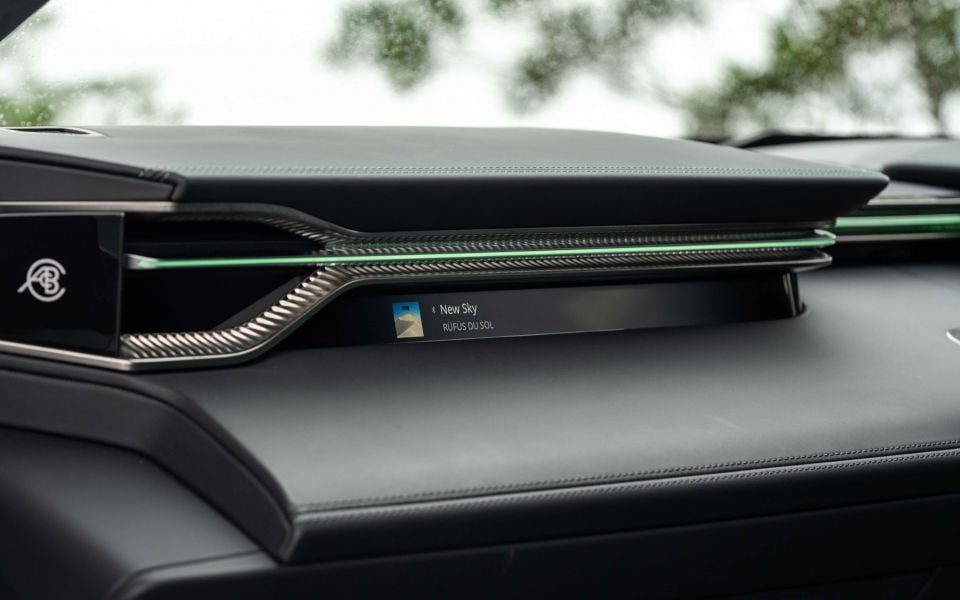
The same programming base that runs games like Fortnite is also what powers the Eletre’s screens and infotainment. This means it presents one of – if not the – smoothest in-car experiences we have ever seen with a screen.
This is the first car we have been in that feels more advanced than a Tesla. Not just how fast it responds or how good the graphics are, but also how it displays the cars in traffic or how it behaves with lots of touches all at once.
It literally feels like you are using the latest iPad Pro but with better graphics. There is not a hint of lag or struggle at all and absolute kudos to Lotus for going down this path.
It’s actually very surprising that a small manufacturer can produce such an incredible infotainment system but the mainstream OEMs still use reversing cameras that make things look like YouTube from 2008.
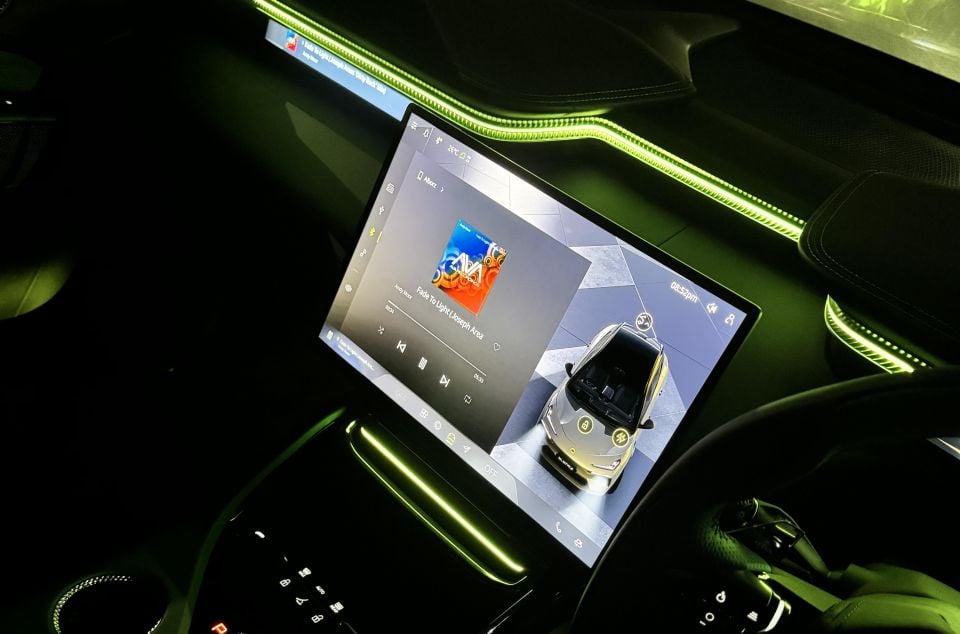
We hope the Europeans and Japanese makers can also see the benefit of using next-generation technology for the car rather than trying to stick with their own proprietary systems.
Apart from the cup holders and charging mat, the only other interior feature we would love to see changed is the indicator stalk, which just don’t feel as nice to touch as the rest of the car.
Overall, the Lotus Eletre’s interior is a delight and a huge surprise.
All versions of the Lotus Eletre feature a 112kWh lithium-ion battery pack.
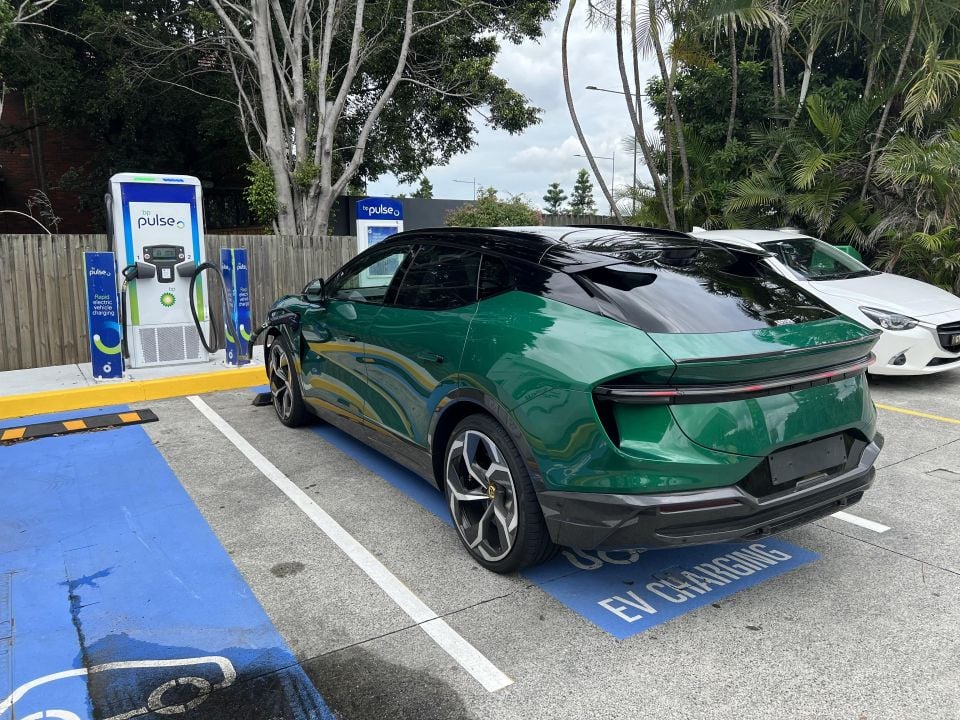
Claimed range on the WLTP test cycle is 600km in the Eletre and Eletre S, while the R has a claimed range of 490km.
During our test, we basically abused the Eletre R as much as possible with endless intermittent acceleration and managed to get about 340km out of a full charge. We have no doubt it will do 400-450km if driven sanely but 490km is probably theoretical at best.
Power in the base Lotus Eletre and the mid-range Eletre S comes from a dual-motor all-wheel drive electric powertrain with 450kW and 710Nm. It has a single-speed transmission on both motors, and hits 100km/h in 4.5 seconds from standstill.
Moving to the Eletre R brings a beefier dual-motor powertrain making 675kW and 985Nm; the rear motor has a dual-speed transmission (like the Porsche Taycan) instead of the single-speed in lesser models. The 0-100km/h sprint takes a claimed 2.95 seconds.
Lotus claims that using its 800V architecture at its peak charging speed (350kW ultra-rapid DC charger), the Eletre can add 400km of driving energy in just 20 minutes – with a maximum range of up to 600km.
The 0-100km/h claim of 2.95 seconds seems a little slow compared to how it feels. The Eletre R in real life seems to struggle just that little bit to get off the line but once it does, it feels as quick as a Ferrari 296 GTB if not quicker in a straight line.
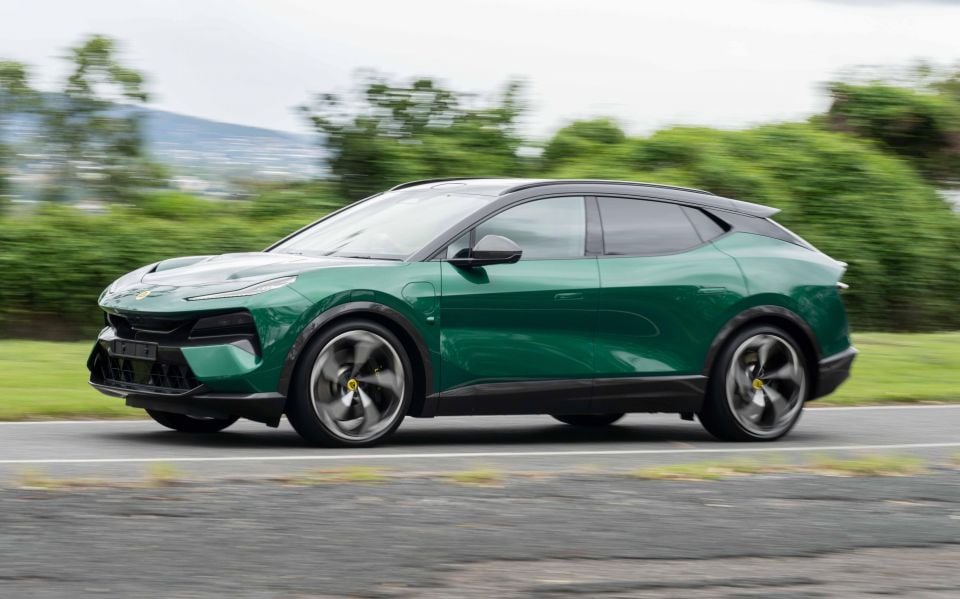
The sub-3.0-second 0-100 acceleration figure takes into account what we could only suspect is Lotus engineers trying to give the powertrain some respite, by limiting just how angry and violent the car may launch from the line.
We found that if we got the vehicle to say, 20km/h and plant the right foot, it would be in another suburb before you could count to three. It’s easy to talk about electric cars being fast, but the Eletre isn’t just fast, it’s f*#king ballistic.
It’s at a point where you really have to question yourself with such things as “would I let my kids in this car with my wife?” (who is always speeding) or “do I need an SUV that is faster than a brand new V10 Lamborghini?” The standard model with 4.5-second acceleration time is absolutely enough for almost every imaginable application, except the ones that include your ego.
We put the Eletre up against a Lamborghini Huracan Evo on a flat piece of private road, and to say the Lamborghini driver went home with some soul-crushing memories would be an understatement. In his own words: “I felt like I was in a Hyundai i30”. So yes, the Eletre is stupidly fast, unnecessarily fast actually – there is no reason a family SUV needs to be this fast, but also there is no reason why it shouldn’t be this fast.
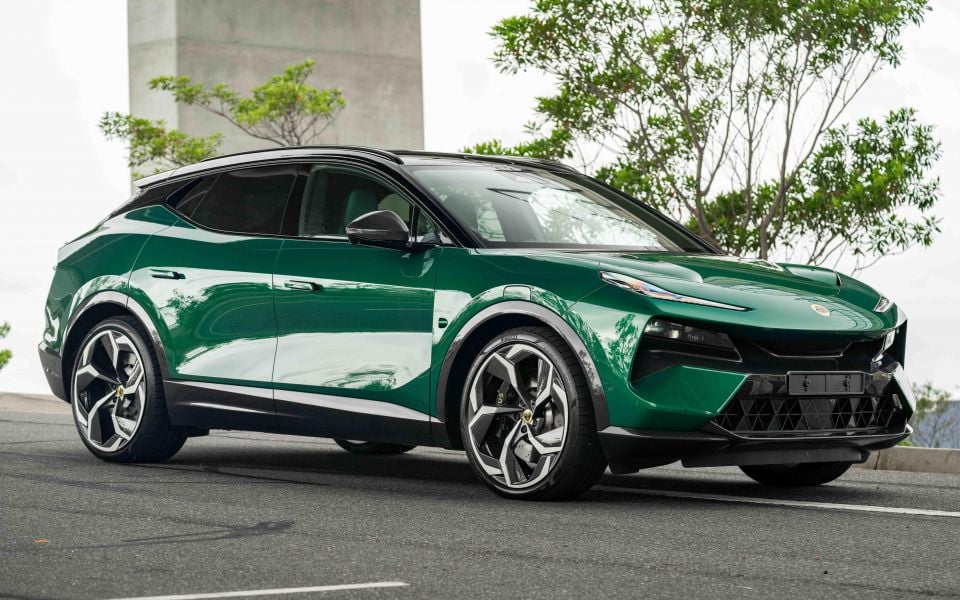
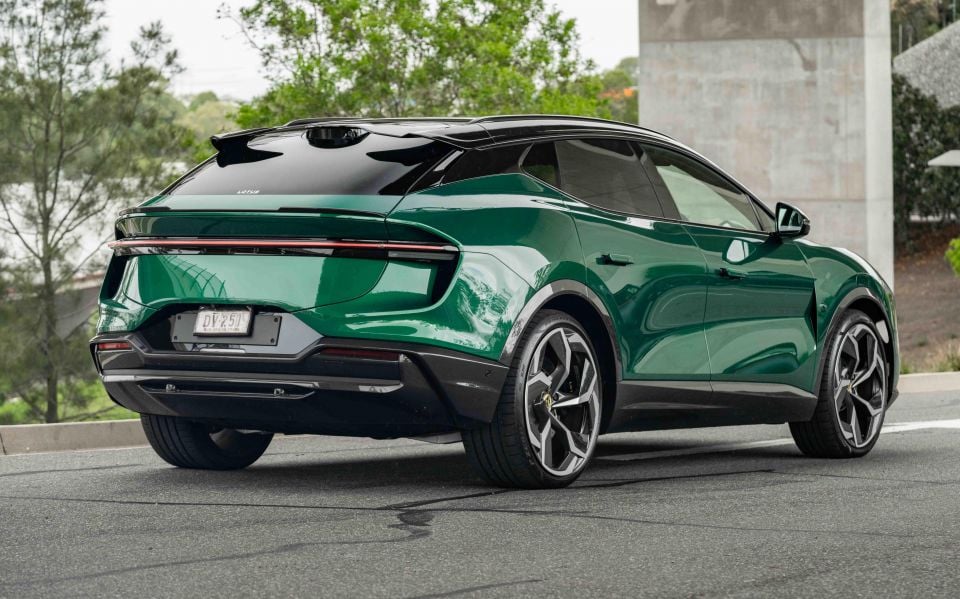
Where expert car reviews meet expert car buying – CarExpert gives you trusted advice, personalised service and real savings on your next new car.
I would say anyone buying the Eletre R needs to seriously consider if they actually need this much power, because 985Nm of torque is a lot. Compare that to the V12 Ferrari SUV at 716Nm, and it puts things into context.
Of course, it also weighs somewhere between 2.6 and 2.7 tonnes depending on spec; so while it goes really fast, it does tend to struggle to slow down with the same vigour. We feel as though if you are going for the Eletre R, you need to spend the $32,199 and go for the carbon ceramic brakes, because it needs them.
After a fair bit of repeated acceleration and braking, the standard brakes begin to struggle and the stopping distance gets longer and scarier. Sure, you are probably not going to drive it with such aggression all the time, but frankly, if you are crazy enough to pick an SUV that feels like it would take off if it had wings, then you better be crazy enough to pay the price of a small hatchback for it to also stop properly.
Given it’s a Lotus, the handling capability of the Eletre is under insane scrutiny by all those who drive it and the company is well aware of the expectations it must meet.
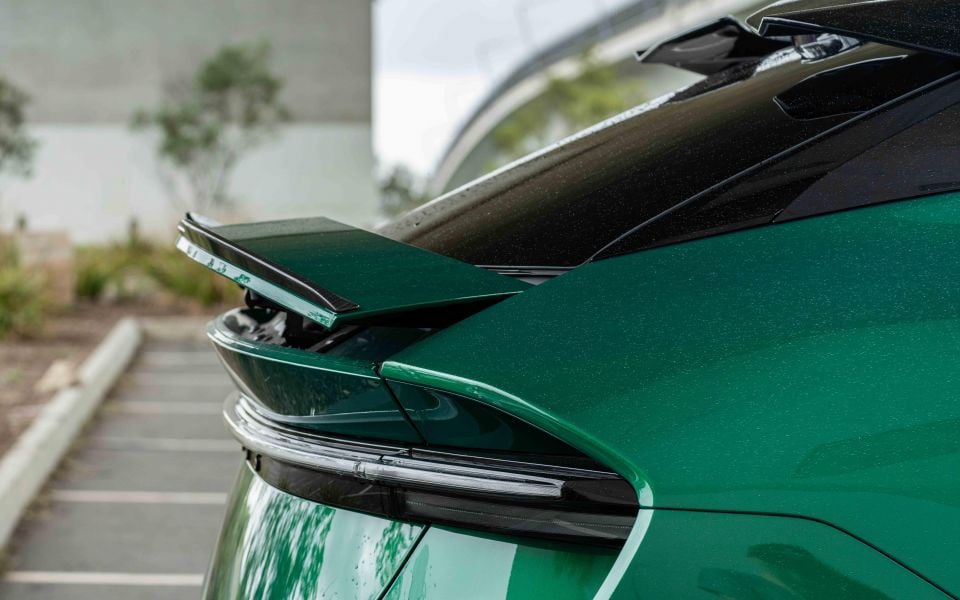
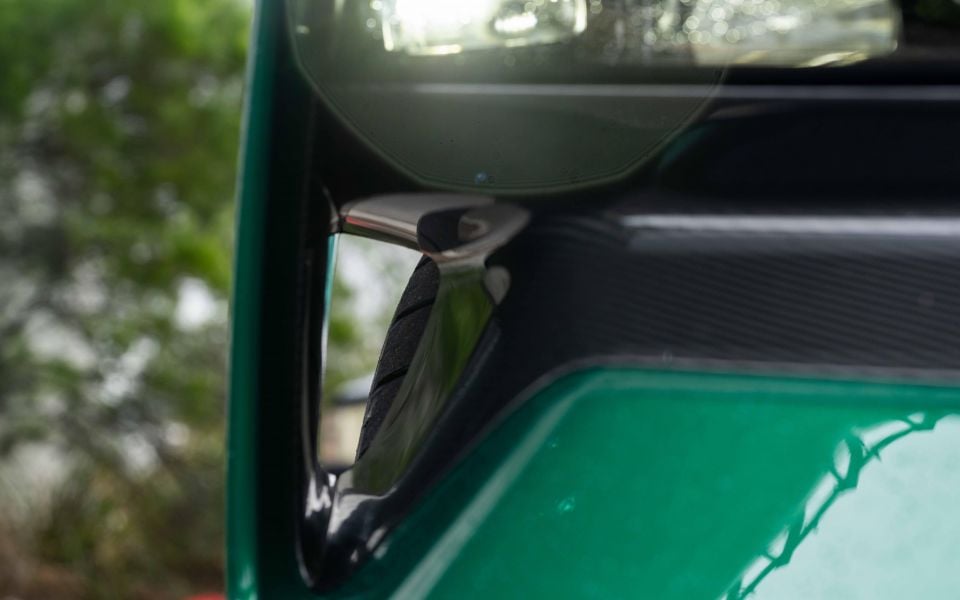
Does it handle like a Lotus Emira? Absolutely not, but does it handle like a Aston Martin DBX? No, it handles better. It’s actually surprisingly good around corners, and while there is a certain degree of undeniable weight transfer side to side, the Eletre feels worlds apart from a Model X in balance and agility.
It’s still not on par with a Lamborghini Urus or Ferrari Purosangue when you push it to the limit, but given its intended application of taking the kids to school while looking like a spaceship, it’s more than capable of keeping up with almost any other SUV on a twisty road thanks to a combination of straight-line speed and handling technology.
The Eletre’s ride on the optional 23-inch wheels was also much better than we anticipated. The active air suspension can raise and drop the vehicle height rather rapidly, and as you go through the various driving modes (Sport is the one to go for if you want to have fun, Range if you need maximum mileage), the character of the car changes rather noticeably and we really did appreciate the rear wing coming in and out to really emphasise the active aerodynamics.
We did try launch control a few times but it didn’t make a huge amount of difference compared to just planting it, nor did the car really indicate that a roller coaster ride was about to start. It would be great if Lotus worked on a similar launch system to what Mercedes-AMG use in their EQ models, which almost violently shakes the car before take off to give you the sensation launch control is active – as you would get with an internal combustion-engined vehicle.
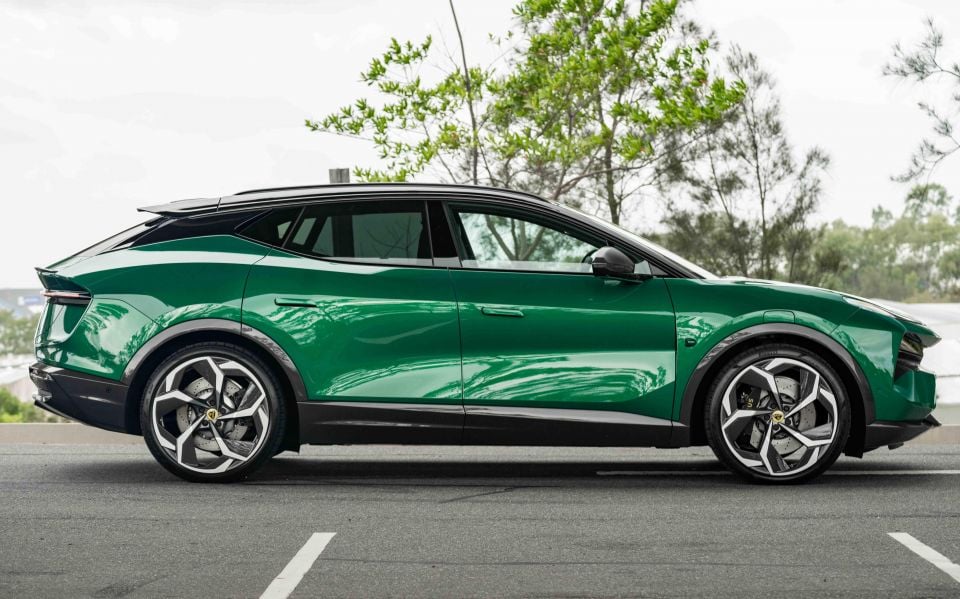
With the R using a two-speed gearbox, you can absolutely feel when the Eletre shifts from first to second. It’s not as smooth as you would think, but it’s actually refreshing because you almost feel like you are driving a normal car.
This is a sentence we thought we would never write, but in this case it is true: it would be great if the Lotus Eletre had the option for fake sound. The vehicle is so incredibly quiet regardless of how fast you are going or what you are doing, that there were times that we (hypothetically) looked at the speedometer and had flashes of jail time without ever realising how fast the car was travelling.
The majority of other high-performance EV manufacturers have bitten the bullet and added some fake noise to their cars and in the past we have chastised them for it; but having now experienced an EV that feels like it can crack the sound barrier in silence (yes, pun intended), it’s absolutely screaming for some level of audible output.
Overall, the driving experience is the best we’ve experienced in an electric-only SUV, and a huge wakeup call for its competitors for what Lotus is turning into – and fast. If this is the company’s first go at making SUVs, then we can’t wait to see what the future products will be like.
The vehicle has not been crash tested by any government safety body – and it will unlikely ever be tested, given its limited production.
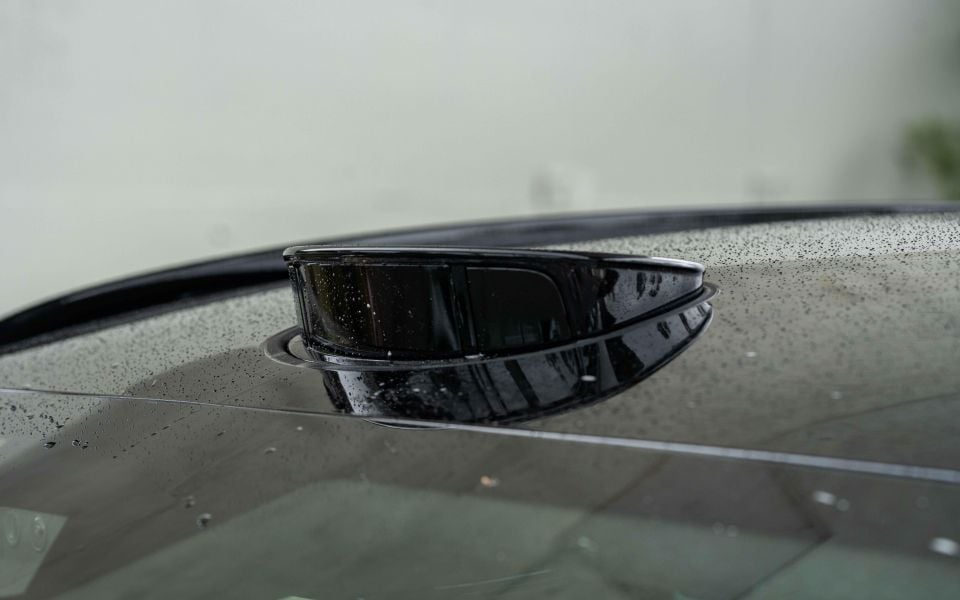
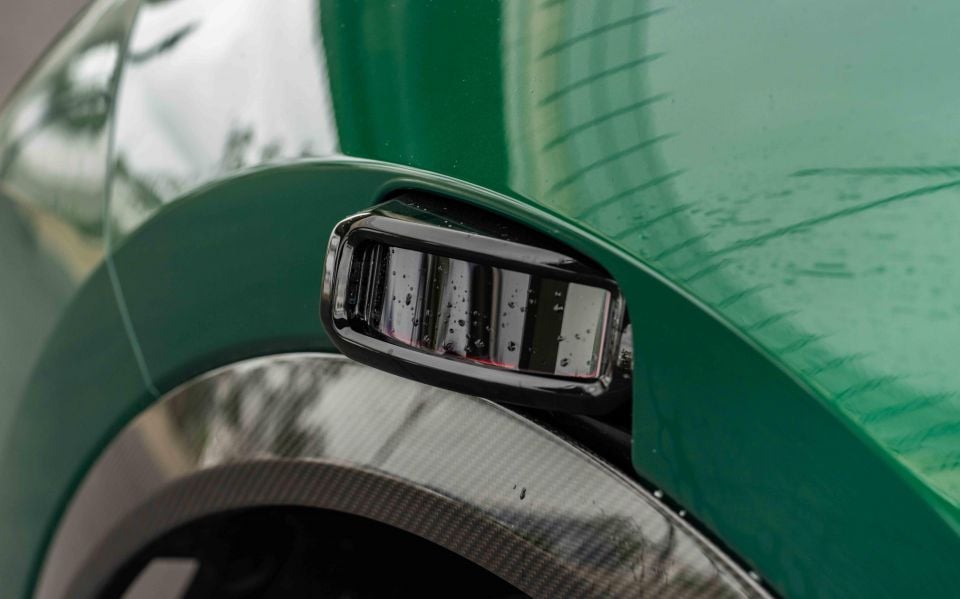
However, the Eletre is built on the same Electric Premium Architecture (EPA) platform as cars like the Volvo EM90 as well as the Polestar 4, so we don’t doubt its capacity to withstand a crash.
Furthermore, the amazing thing about the Eletre is the vast number of safety systems built into the vehicle.
From the spaceship-looking pop up LiDar systems on the roof and the sides, we have never seen a vehicle able to detect pedestrians, cars, bikes, trucks, utes and even buses so uniquely and flawlessly. The system can even see safety cones on the side of the road or on the road and provide a very clear visual display.
Lotus claims the Eletre has an incredible 34 sensors, including the aforementioned LiDar array in addition to 12 ultrasonic sensors, seven HD cameras and six radars. All of that information is fed through a Nvidia graphics processing unit in combination with the Unreal engine.

However, while the safety systems kept the vehicle very much in line, our Eletre’s lane keeping assist was very aggressive and assertive.
We are hopeful this can be toned down a little bit before Australian models arrive. It also occasionally failed to detect our (right) hand on the steering wheel, which would see the vehicle make a lot of warning noises and eventually put on the hazard lights, which was a little annoying to say the least.
For now we are putting all of these bugs down to its pre-production status but we will revisit this again once actual Australian-delivered vehicles arrive.
The Eletre has a five-year, 150,000km warranty (whichever comes first) for the car itself, while the battery is rated for eight years or 200,000km. Other warranty periods include 12 years for corrosion and five years for the paint.
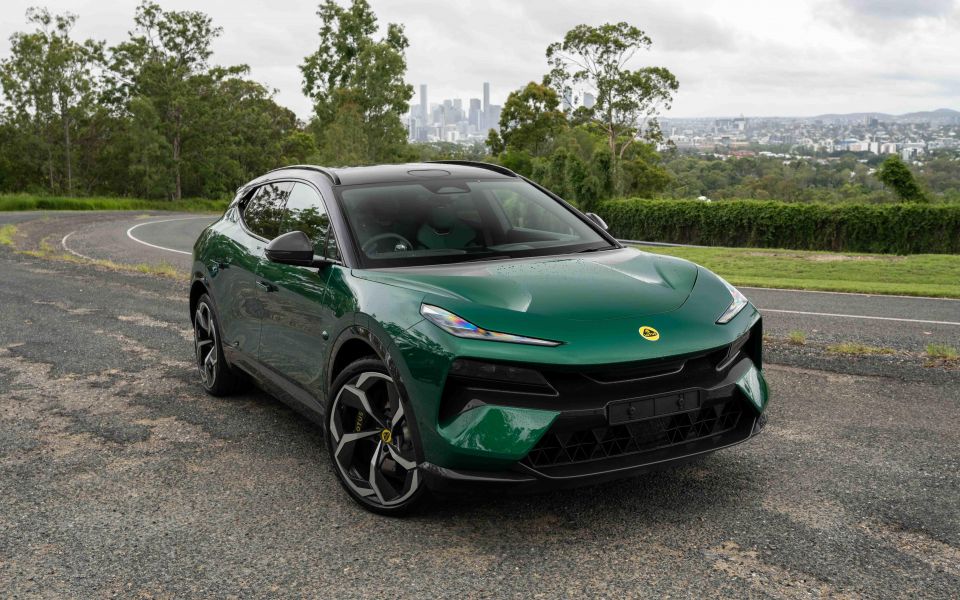
As for running costs, Lotus Australia distributor Simply Sports Cars is finalising the capped priced servicing fees for the Eletre at this moment, but scheduled Service intervals are two years/30,000km and even then, the only mandatory replacement items at these scheduled services are the cabin air filter and brake fluid.
All other items are inspect and replace only if necessary. You will also need to replace the battery coolant every five years/100,000km and drive motor transmission lubricant every four years/80,000km.
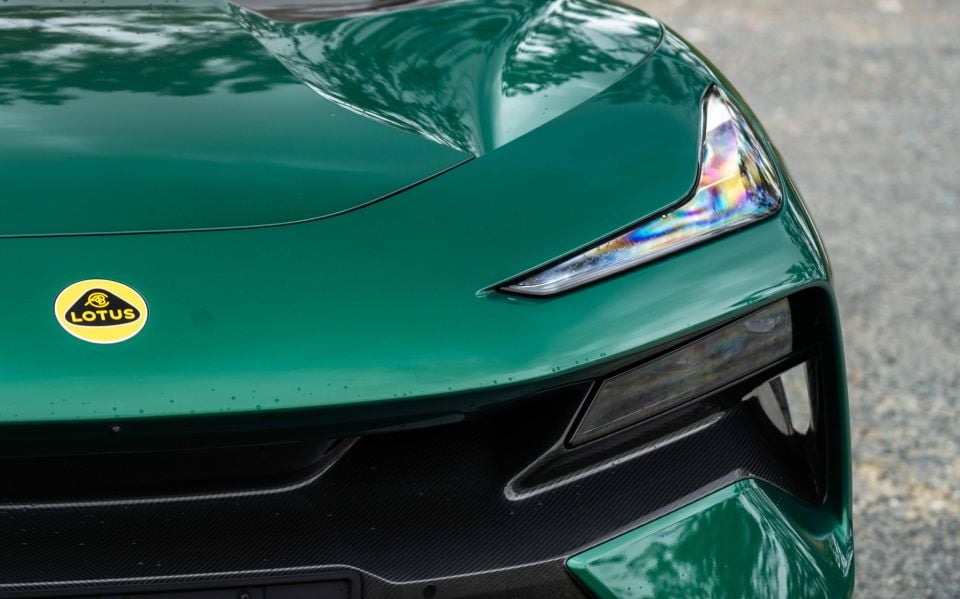

Lotus Eletre highlights:
Eletre S brings:
Eletre R brings:
List of options and costings across the the S and R models is below – “o” means available.
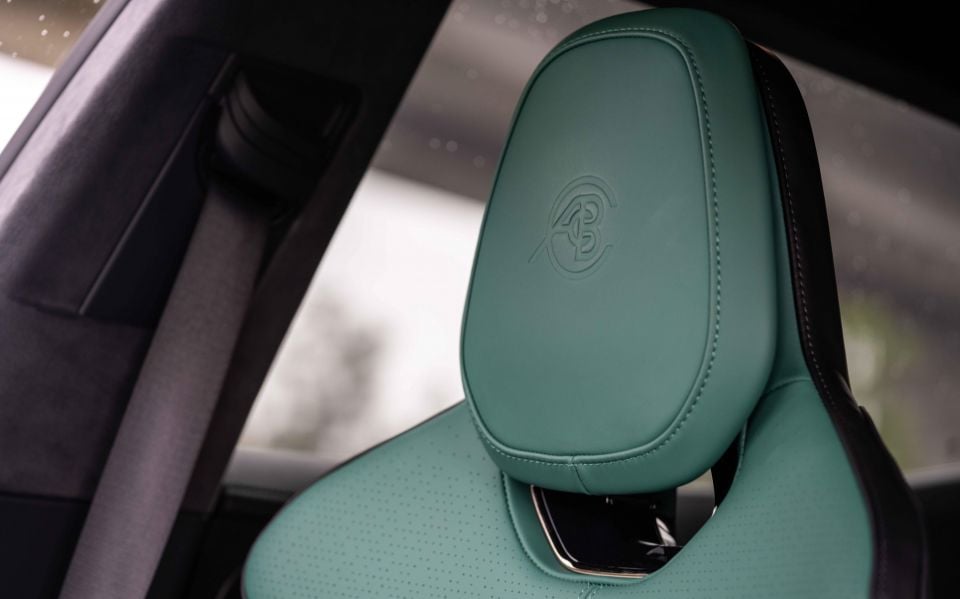
| Option Item | Price | Eletre S | Eletre R |
|---|---|---|---|
| Paint Kaimu Grey | No Cost | Std | o |
| Paint Natron Red | $3,249.00 | o | o |
| Paint Galloway Green | $3,249.00 | o | o |
| Paint Stellar Black | $3,249.00 | o | o |
| Paint Blossom Grey | $4,849.00 | o | o |
| Paint Solar Yellow | $4,849.00 | o | Std |
| Wheels 20″ 5-spoke Grey | No Cost | o | N/A |
| Wheels 22″ 10-Spoke Silver Diamond Turned | No Cost | Std | o |
| Wheels 22″ 10-Spoke Grey Diamond Turned | No Cost | o | o |
| Wheels 22″ 10-Spoke Black | $4,099.00 | o | Std |
| Wheels 22″ 5-Spoke Grey Diamond Turned w/CF inserts | $5,399.00 | o | o |
| Wheels 22″ 5-Spoke Black w/CF inserts | $5,399.00 | o | o |
| Wheels 23″ Multi-Spoke Silver Diamond Turned | $8,149.00 | o | o |
| Wheels 23″ Multi-Spoke Grey Diamond Turned | $8,749.00 | o | o |
| Wheels 23″ Multi-Spoke Black | $9,399.00 | o | o |
| Wheels 23″ 5-Spoke Grey Diamond Turned w/CF inserts | $10,799.00 | N/A | o |
| Wheels 23″ 5-Spoke Black w/CF inserts | $10,799.00 | N/A | o |
| Tyre Pirelli P-Zero CORSA | $1,899.00 | o | Std |
| Calipers 6 Piston Green | No Cost | o | o |
| Calipers 6 Piston Red | No Cost | o | o |
| Ceramic Brake Pack – Silver Calipers | $32,199.00 | N/A | o |
| Ceramic Brake Pack – Yellow Calipers | $32,199.00 | N/A | o |
| Exterior Carbon Pack | $9,699.00 | o | Std |
| Extended Carbon Pack | $24,499.00 | o | o |
| Gloss Black LOTUS Lettering | $399.00 | o | Std |
| Interior Magnetite | No Cost | Std | o |
| Interior Jasper | $11,999.00 | o | o |
| Interior Malachite | $13,299.00 | o | o |
| Interior Gold | $11,999.00 | o | o |
| Interior Ruby | $9,299.00 | o | o |
| Interior Quartz | $4,699.00 | o | Std |
| Comfort Seast Pack (5 seats) | $5,399.00 | o | o |
| Executive Seat Pack (4 seats) | $13,499.00 | o | o |
| Semi Aniline Leather | $3,199.00 | o | o |
| Optional Seat Belt Colours | $1,099.00 | o | o |
| Alcantara Steering Wheel | $1,399.00 | o | o |
| Stainless Steel Pedals | $279.00 | o | Std |
| Illuminated Side Sills | No Cost | Std | Std |
| Interior Carbon Pack | $9,699.00 | o | o |
| Side Cameras | $5,399.00 | o | o |
| Rear Privacy Glass | No Cost | Std | Std |
| Configurable Ambient Lighting | No Cost | Std | Std |
| Electric Tow Bar | $2,999.00 | o | o |
| KEF Reference Audio | $8,399.00 | Std | o |
| Lotus Dynamic Handling Pack | $17,799.00 | o | Std |
| Home Link | $539.00 | o | o |
| Air Quality System | No Cost | Std | Std |
| Gloss Black Aluminium Roof with Black Roof Rails | No Cost | Std | o |
| Glass Roof | $3,299.00 | o | o |
| Intelligent Glass Roof | $4,699.00 | o | o |
| Parking Pack | $2,699.00 | o | o |
| Highway Assist Pack | $3,899.00 | o | o |
We jumped in the Lotus Eletre expecting – almost hoping – to be disappointed. But every day that went by, that disappointment turned into a genuine sense of joy.
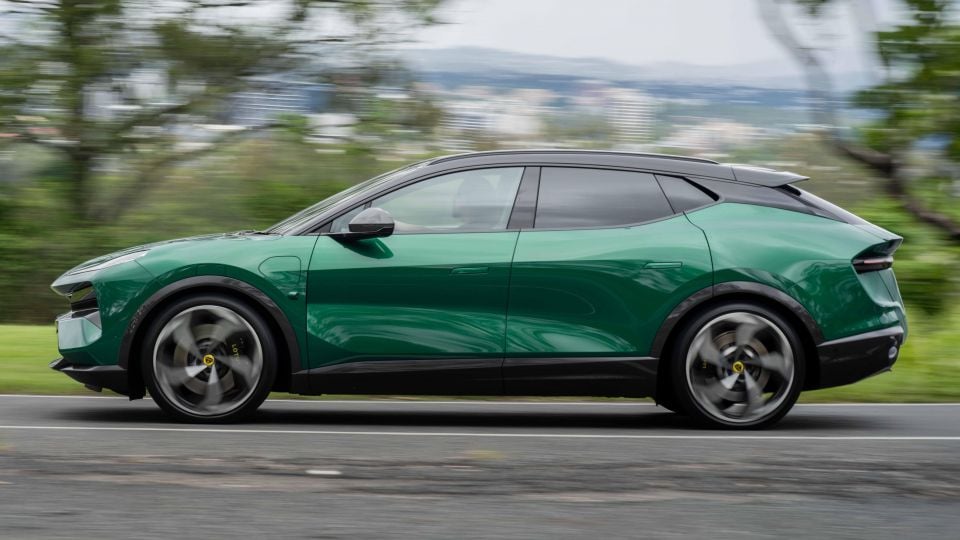
As an avid critic of electric performance vehicles, the fact the Eletre is actually really, really good is somewhat worrying but also – logically – it gives us hope the future of motoring can still be full of thrills, laughs and good experiences.
The main issue with the Eletre is not the car, it’s actually the Lotus badge combined with the fact that it’s the most expensive car in Australia we get from China. For some buyers, that may be a step too far.
However, if you are in the market to buy an SUV priced somewhere between $250-350,000, take it as a cultural experience and just go drive an Eletre.
The worst that can happen is you will still buy something else, the best that will happen is you will realise just how incredibly fast and fun, yet luxurious technologically advanced the Eletre is.
If that doesn’t help question your own internal dialogue around the vehicle’s fundamental merit versus its country of origin, nothing will.

Click the images for the full gallery
BUY: Lotus Eletre MORE: Everything Lotus Eletre
Where expert car reviews meet expert car buying – CarExpert gives you trusted advice, personalised service and real savings on your next new car.
Alborz Fallah is a CarExpert co-founder and industry leader shaping digital automotive media with a unique mix of tech and car expertise.


Max Davies
2 Hours Ago


William Stopford
18 Hours Ago


Ben Zachariah
19 Hours Ago


Derek Fung
20 Hours Ago


Matt Campbell
1 Day Ago


William Stopford
2 Days Ago